February 26, 2017
Martha O'Kennon
Wow. I can't believe how many new buggies are starting to reappear (and for some of them, appear for the first time). We had 9 spiders, a couple of them "old". Beetles are raising their tiny heads, as are some of the early=spring flies, and one or two new barklouses. Of course, some of these are repeats of LAST spring 2016. Let's get this thing rolling. One of the scenic slides are of the Winter Aconites, which arrived on February 18, and brought the honeybees with them.
Here is the little aconite bed and some of their favorite customers.
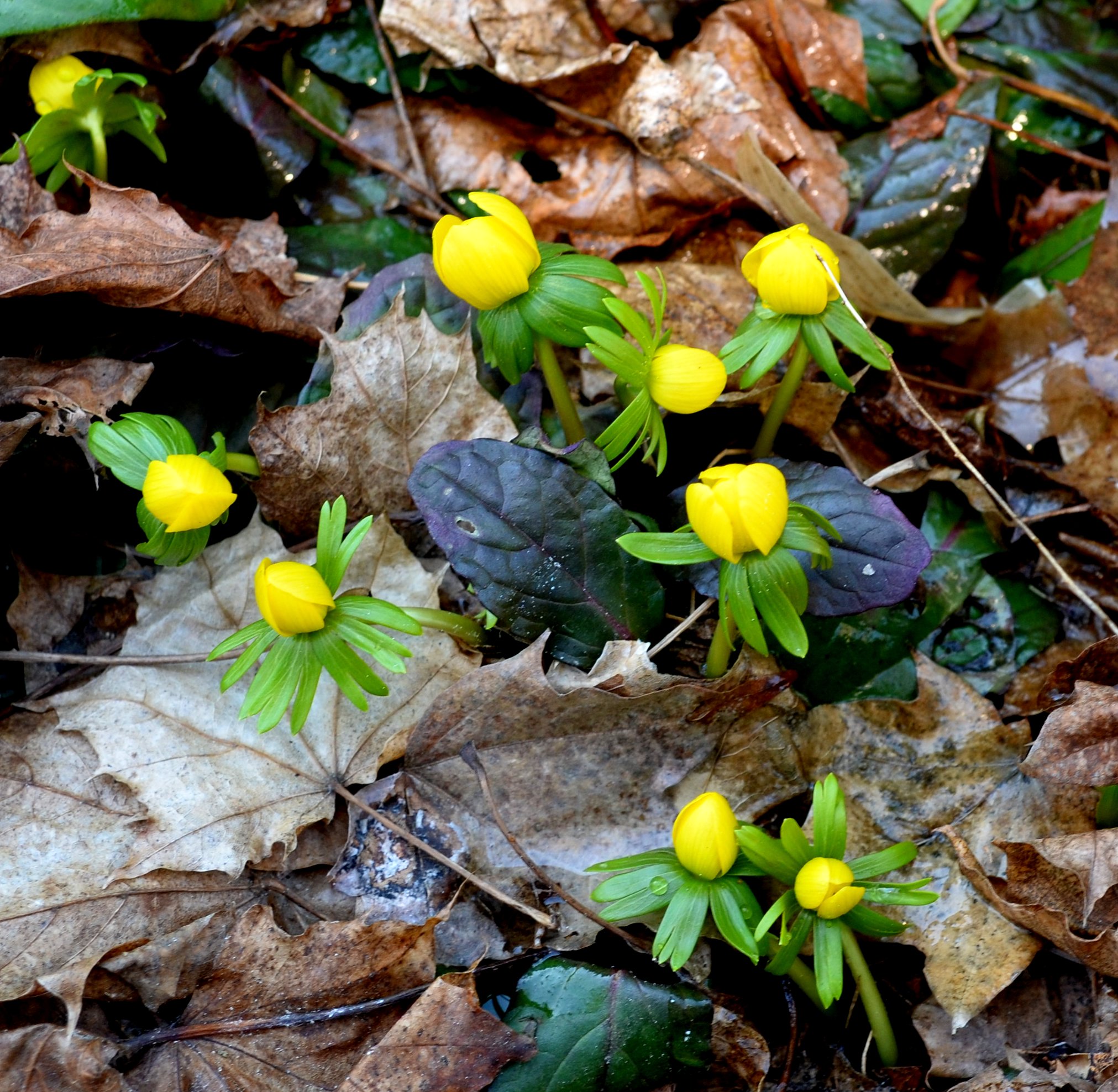
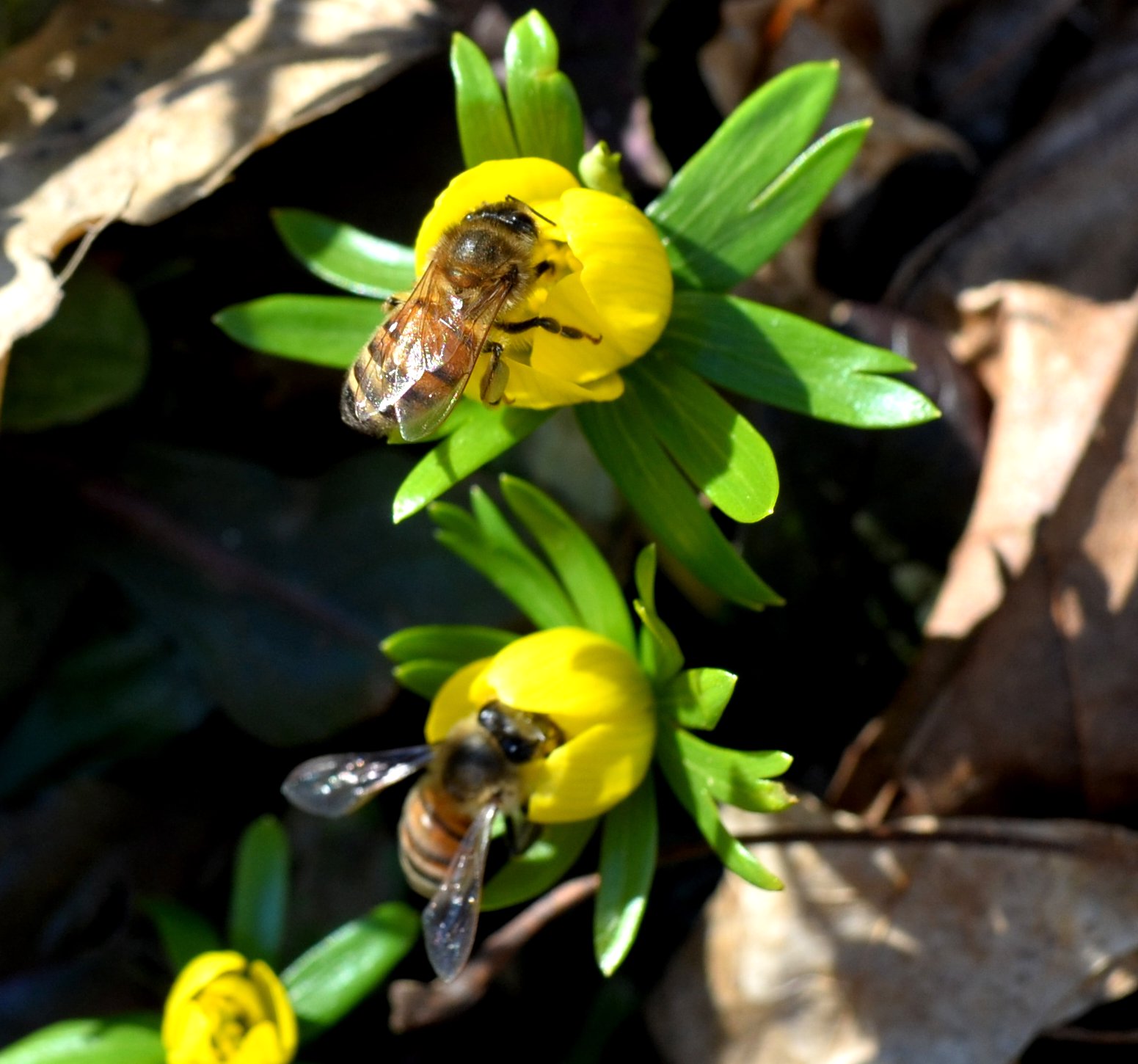
Just in the past few days, the ants have been fairly active. I believe these are common carpenter ants.
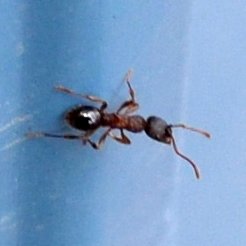
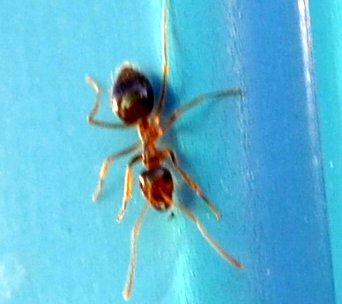
But we did see a couple of psyllids (barklouses live here, etc.) This reddish one is actually called an "outer" barklouse. And this fellow with the green belly and reddish head and thorax is another psyllid, or triozid, Trioza albifrons (second image from February 1, 2017 and we also have an observation on February 22 2016 as well as on October 19, 2016). It might seem that they appear in October, disappear for 3 months (probably underground), and then stick their heads up again in February.
 2 20 17 34.jpg)
 2 20 17 6.jpg)

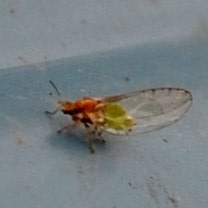
Here is a metallic green beetle, maybe 3mm long. It appeared mid-March 2016. Then a lovely scarab-shaped beetle with an orangey-brown hard wing case with a black happy-face on it. And a rove beetle, methinks the same as last blog. A virtually identical one showed up last year March 7th.
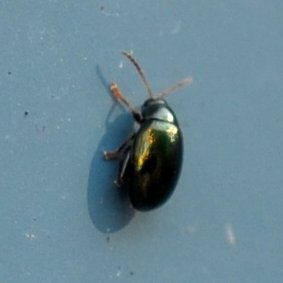
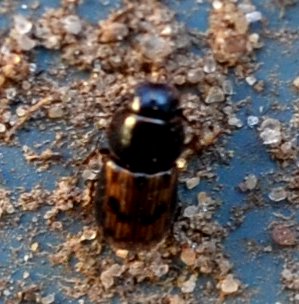
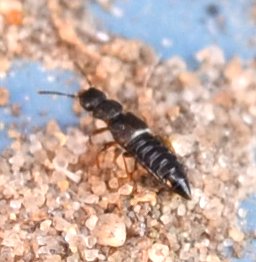
Try comparing this little orangeish mystery with this one from March 8 of last year (2016). I'm sorry these images are so unclear - the beetles themselves are only about a millimeter or two long.
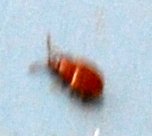
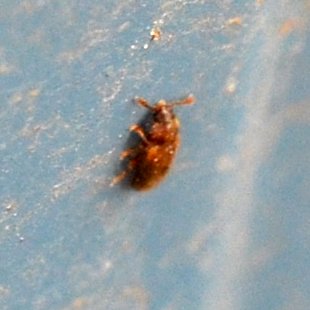
The little leafhoppers are startng to diversify. Here is one whose genus is Arboridia, two views. The first view shows him or her drinking from a raindrop. And its spotty friend genus Eratoneura;
 drinking- 2 14 17 2.jpg)
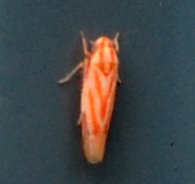
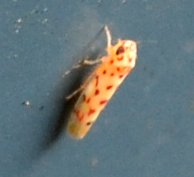
The common midges are back. Here is a male with the fuzzy antennae. Then a gnat with wide wings -- Remember last year when so many of these seemed to have a red mite parasite? Here's an example. And last, probably a female mosquito with very chic wings.

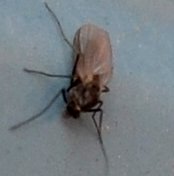
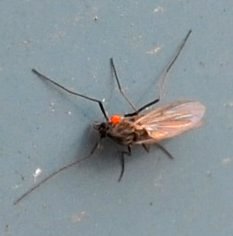
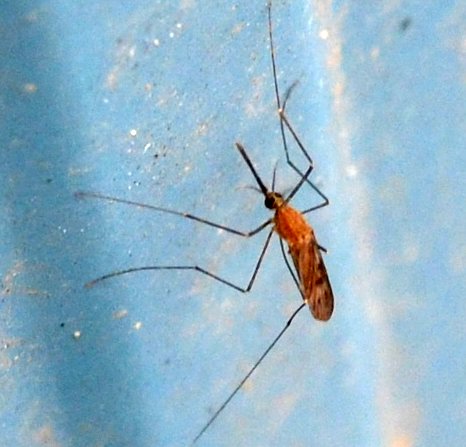
Here is some kind of gall midge.
I was watching a female of that sort, one of the ones with the long stilt-like legs, when suddenly a male approached her from below and the next thing I knew, they were mating.
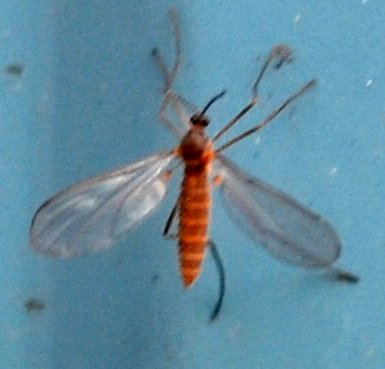
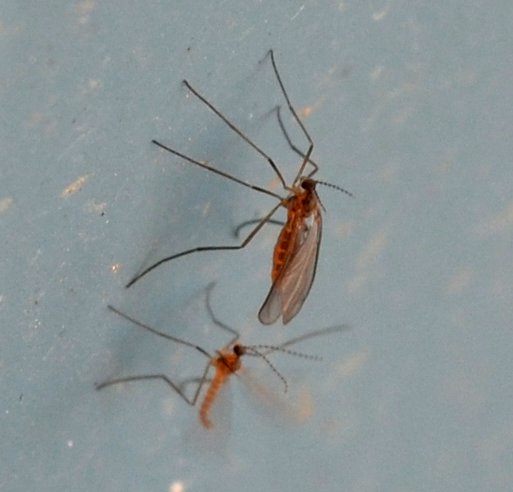
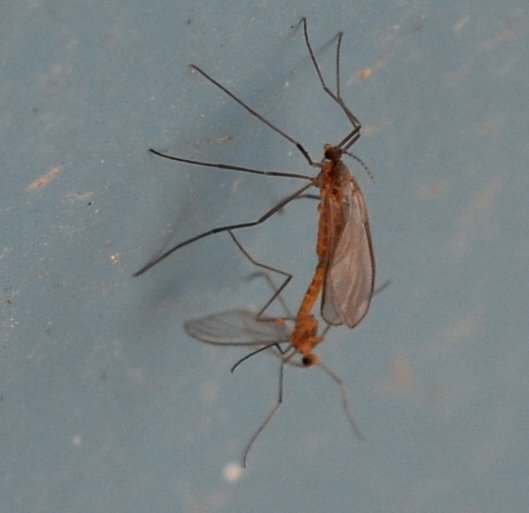
Here we have one of those very tiny flies with the spotted wings, an exquisite brown lacewing, and a mystery critter, which almost fooled me into thinking it was a pillbug.
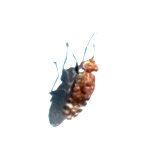
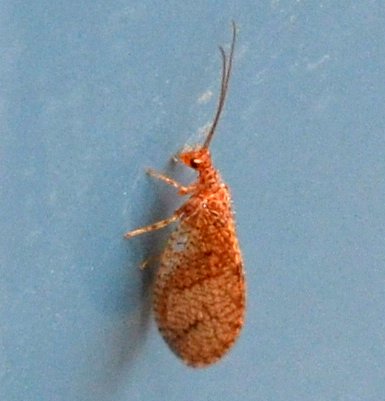
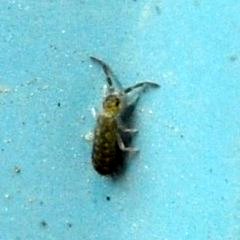
Speaking of pillbugs, here is one running in three dimensions. And here is another mystery creature. Any guesses? And whose skeleton is this?

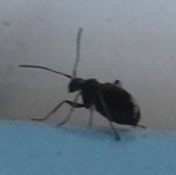
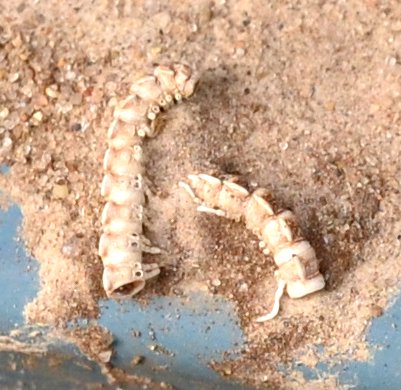
Now I really think we need some more flower pictures before we go on to the spiders. The winter aconites have been going for about a week now. These are the ones I started from a few that Betty Beese gave me years ago. The pale purplish-blue crocuses are an early variant. They always seem to open only a few days after the winter aconites.
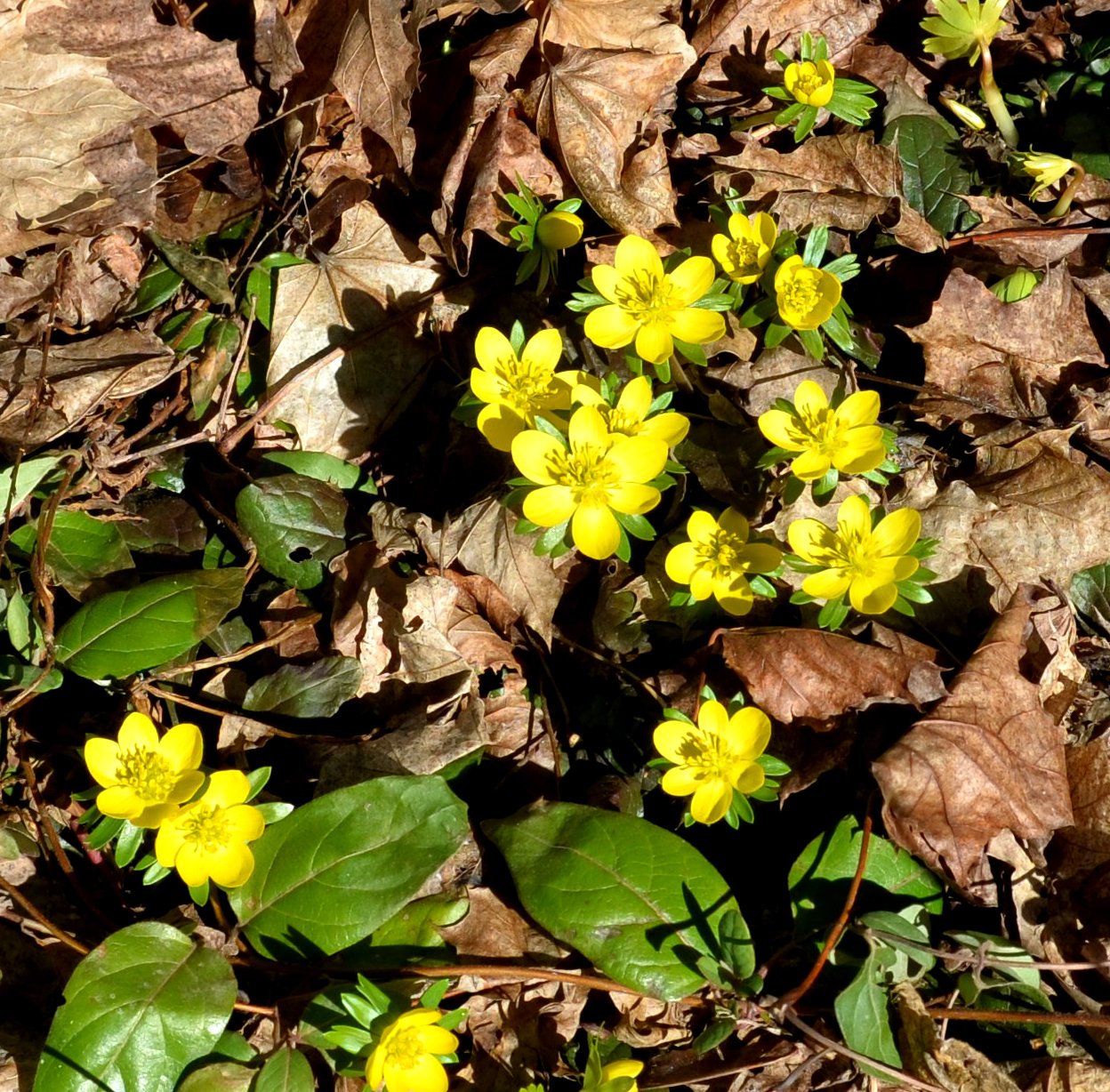
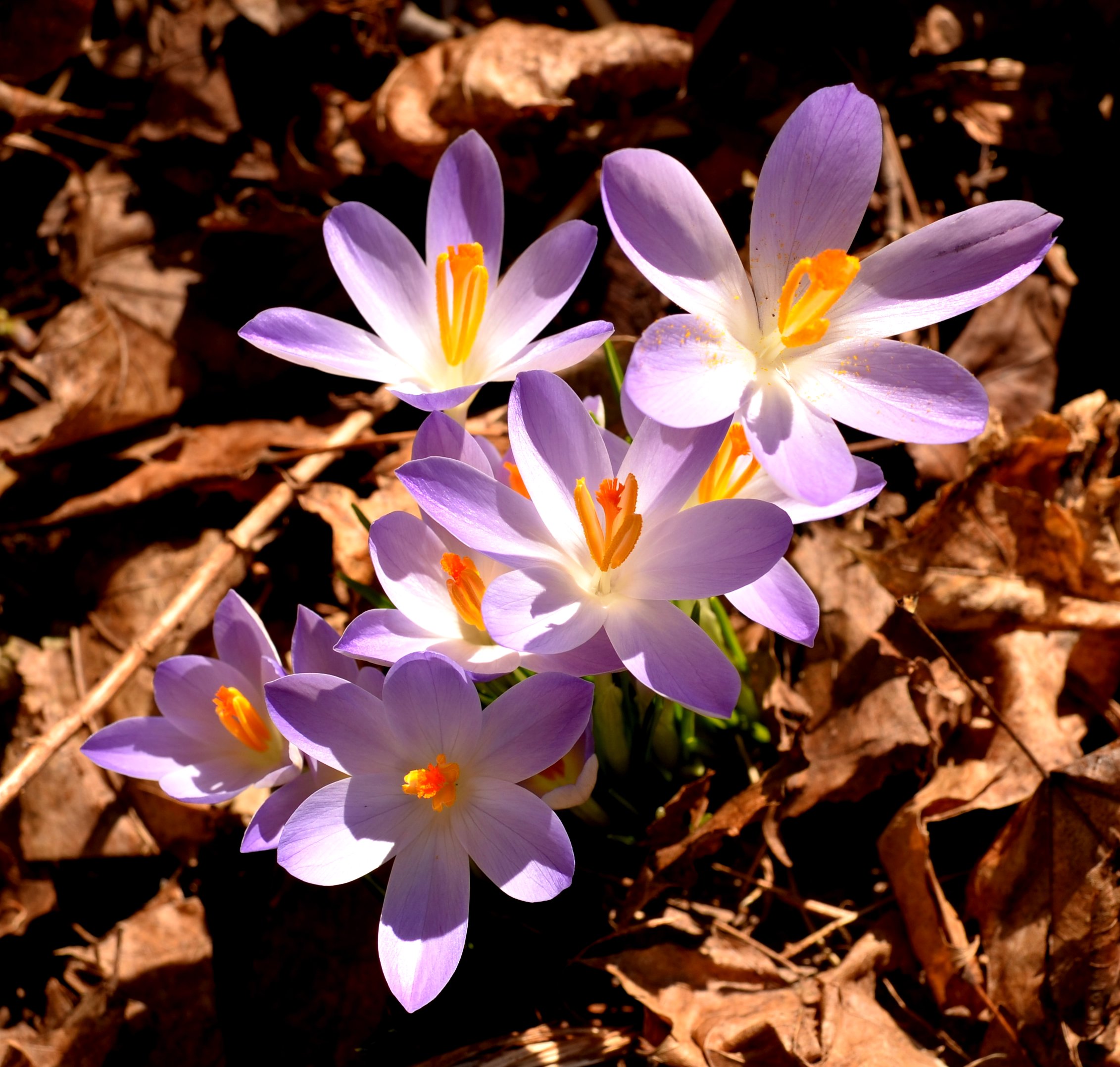
Here are a couple of pictures of the fishes. I have not seen Callie yet this year, but I think I have seen 7 out of the 9 larger fish. Oh, yes, I haven't seen Randy the Oranda either. But click on this first picture and some of the many many baby fishes will appear dimly in the murk of a pond untended all winter except to net some leaves out. The second image is of Pinky (the one who survived the drought a few years ago when the raccoons diverted the pump to vacuum almost all the water out) and Fanny, the big calico, who came to visit soon after that and who has given new life to the pond over and over.
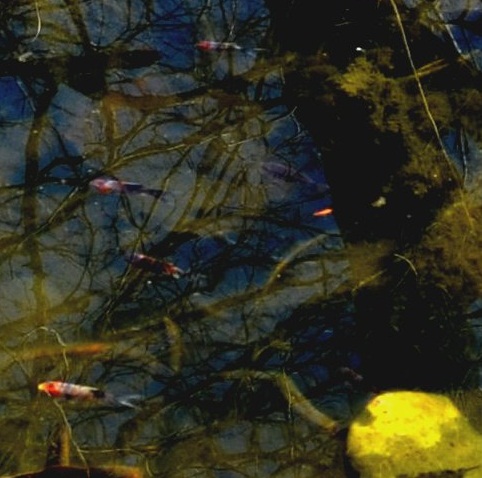
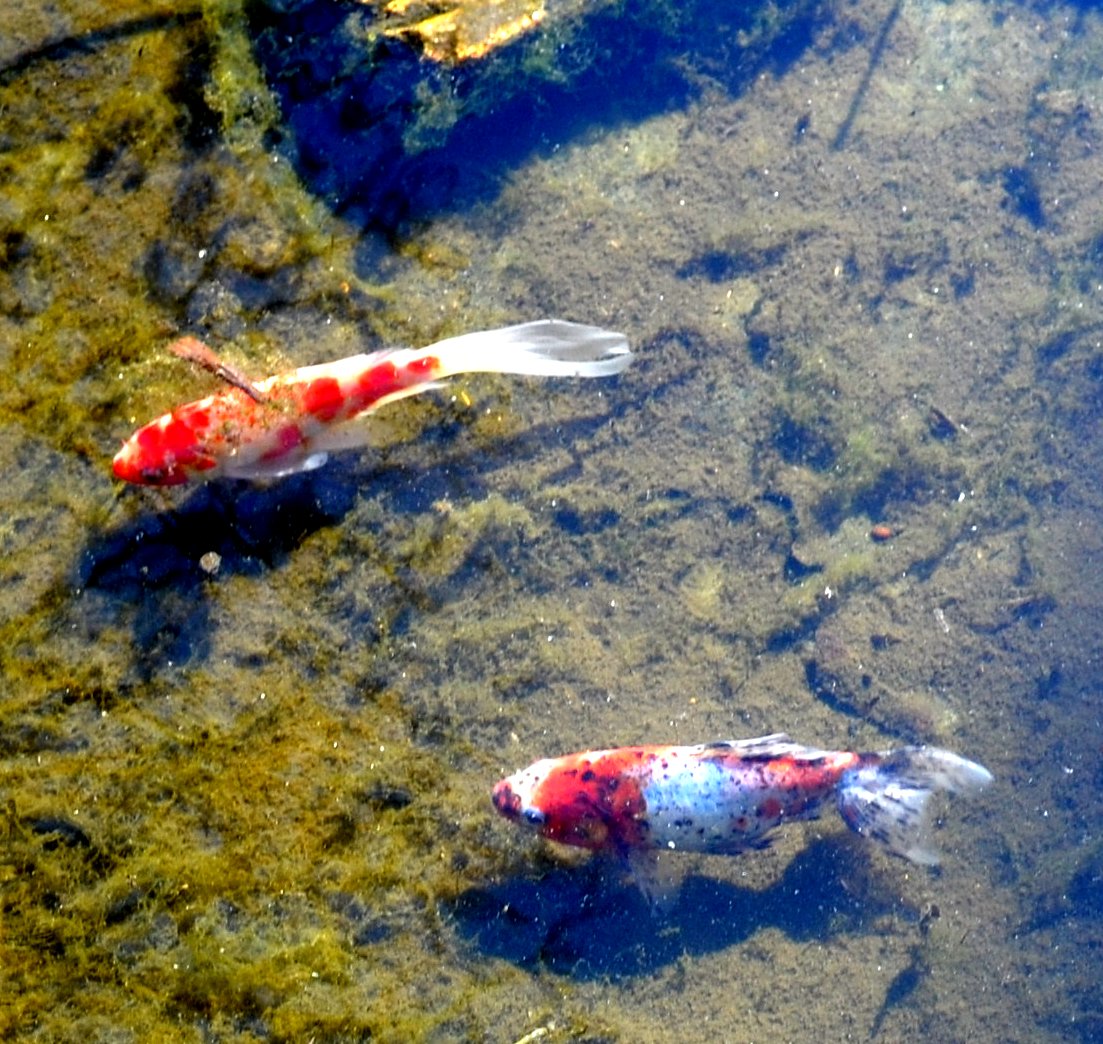
These may be spider eggs.
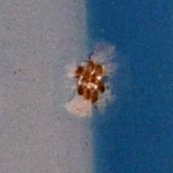
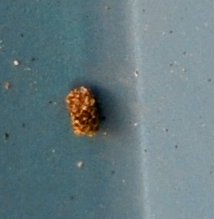
Now for the spiders. It seemed as if the different species just kept coming and forcing me to try to ID them. Worst of all, the smallest ones seemed also the most determined to leg it out of there. First is a really tiny ground crab spider. Then a little common house spider, which has just made its first little web to hang from. Then a cobwebber. And another cobwebber. I think the two cobwebsters are different kinds. The first is very blatantly male, and I think the second is female but it isn't so easy to see her palps.
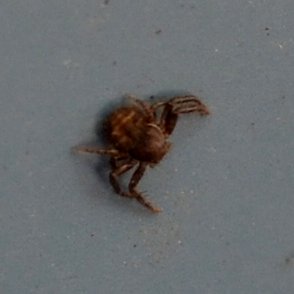
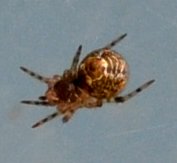
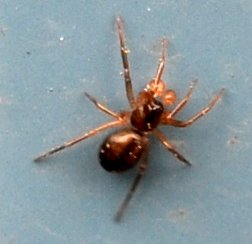
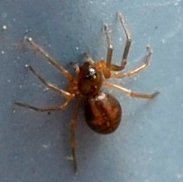
Suddenly a bit bigger spider began running away from me. I had to drag the lawn chair to try to keep up with him as he sped cross the siding. I recognized the abdomen as possibly being that of Maevia inclemens. Two years ago (June 9, 2015) I saw one but with a blue cephalothorax (third image). This is one of the spiders that has a substantial amount of color dimorphism. Both are males in this case.
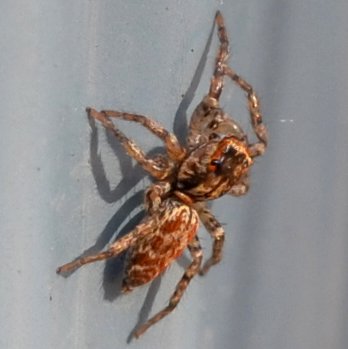

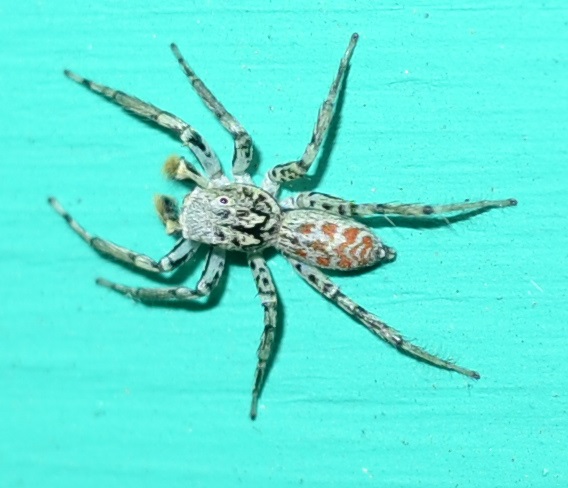
Here is an unknown spider, but may be a cobweb spider. I'm lookingat what seem to be shining eyes on the top of its head. Then a most unusual CREATURE. I saw at first this feathery-looking plume. Suddenly it started to quiver and suddenly it unpacked itself into a very strange-looking spider with very long front legs compared to all its other legs. It is called a cribellate or feather-legged spider.
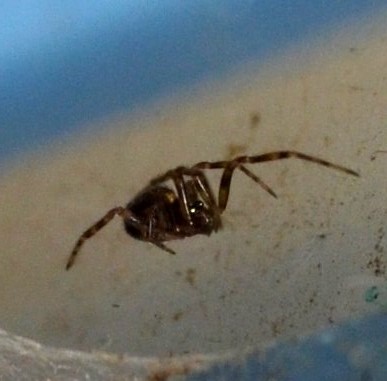
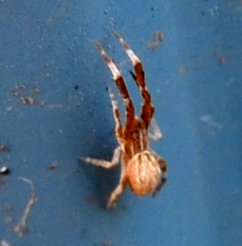

Here is a new kind of spider (to me at least). After a lot of looking and comparing, I'm thinking it is a kind of nursery web spider (female), mostly based on the looong back legs and its eye-pattern with two eyes on the top of the head. Also there is the kind of tufty abdomen that I usually think of as belonging to members of the ghost spider clan. The next image I first diagnosed as a jumping spider, but it has all the qualities above, so I'm switching to nursery web for it as well. The colors sort of disappear when I use the S (extra short shutter speed) setting. Last is one that I have no clues about! It IS extremely small.
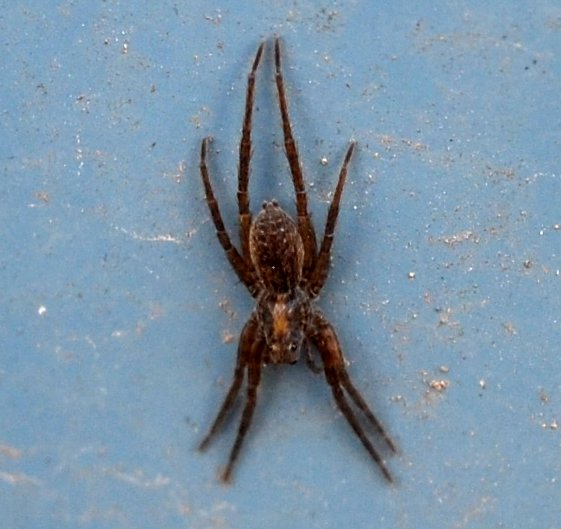
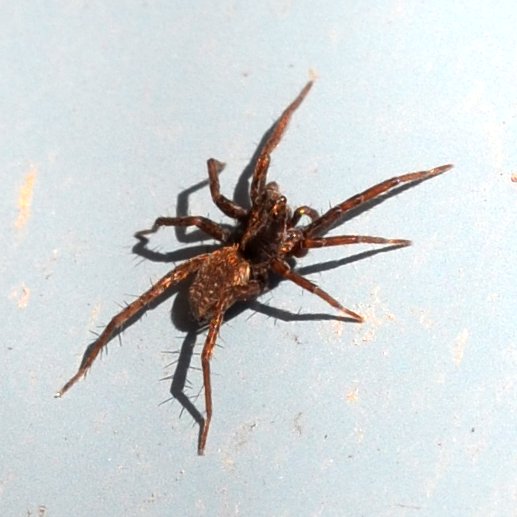
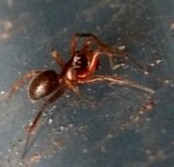
Now we're down to a whole bunch of orbweavers. The numbers of orbweavers and their genera (genuses). I'd gotten familiar with the Araneus genus -- that's the one that contains the big Cross Orbweaver and the Marbled Orbweaver. Then I learned last winter about the genus Eustala. It includes the Humpbacked Orbweaver, Eustala anastera. Here is one that showed up again on February 11 this year. But then I found a reference to this other member of the Eustala genus and now think this second one is also a member. Here is an upside down pose. And here is one from February 17th of last year. I now think it's Eustala too.
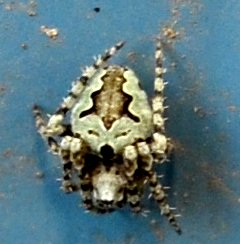
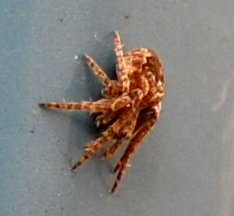
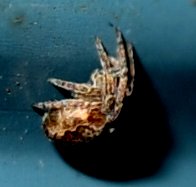
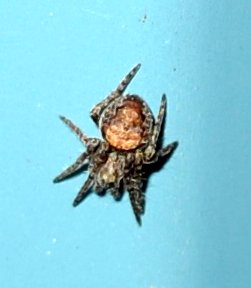
When I was writing up this edition of the blog, I missed a couple of animals - so surprise! I forgot about the pirates! I'm thinking this is one of the Mimetus genus, quite likely Mimetus notius. And sure enough, this last image is of its probable double from February 19, 2016.
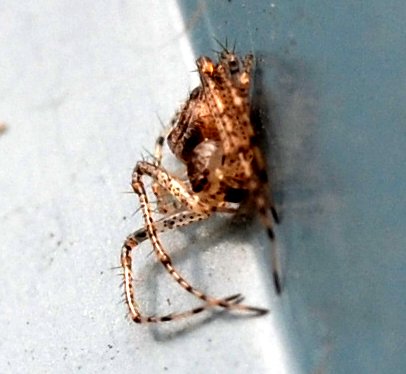
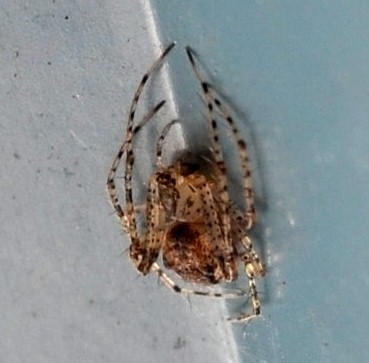
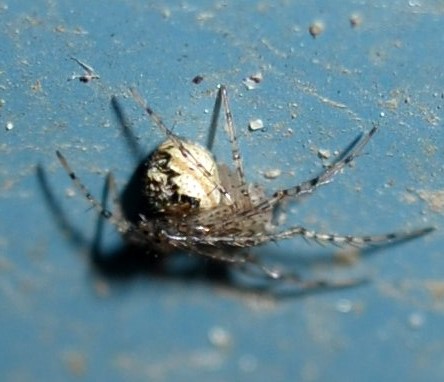
That's about it for now. We've gone through a period of about 60 F (about 18 C - just a guess - I know 68 F is 20 C) for a week and yesterday went back to chilly and snowy!
I hope you enjoy correlating "bugs we have seen in January and February 2016 and 2017" as much as I do. This should gradually start to take some kind of form as we compare populations year by year. I know it's been a long time in between blogs, but things should start to take off pretty soon!
Love, Martha
Back to February 6, 2017
Ahead to March 6, 2017
Back to 2017 menu
Back to 2016 menu
Back to main menu
copyright Martha O'Kennon 2017






 2 20 17 34.jpg)
 2 20 17 6.jpg)







 drinking- 2 14 17 2.jpg)








































